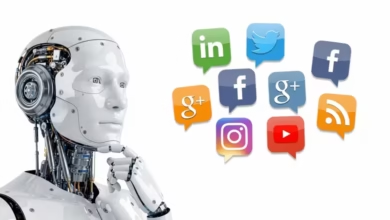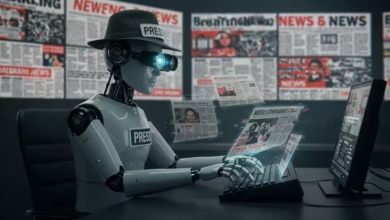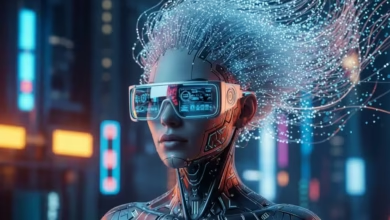AI and Creativity: Can Machines Write, Paint, and Compose?
AI and Creativity

This blog post delves into the fascinating realm of AI and creativity, examining how machines are transforming artistic expression across various mediums. It begins by exploring the intersection of AI and creativity, highlighting innovations that have emerged at this confluence. The article then discusses AI-generated art, detailing the techniques that enable machines to create visually compelling works. Furthermore, it addresses how AI is influencing music composition, augmenting the creative process for contemporary musicians. Finally, the post encourages readers to embrace AI in their creative endeavors, suggesting that integrating these technologies can enhance artistic outcomes. Overall, it showcases the potential of AI and creativity to reshape the way we understand and engage with art.
Exploring The Intersection Of AI And Creativity
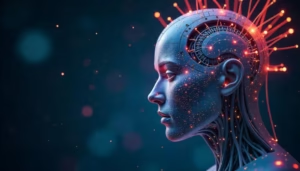
The relationship between AI and creativity is continuously evolving, challenging traditional boundaries of artistic expression. With the advent of sophisticated creative algorithms, machines now have the capability to generate compelling narratives, artworks, and music compositions that rival human creativity. This raises intriguing questions about the essence of creativity itself and whether machines can produce art that resonates with human emotions on a profound level. By analyzing the outputs of AI-driven tools, we begin to understand the intricate ways in which technology is redefining artistic boundaries.
Core Aspects Of AI And Creativity
- Autonomous Creation: Machines that generate content independently.
- Collaborative Tools: AI-enhanced software that assists human artists.
- Style Transfer: Algorithms that apply artistic styles to new works.
- Data-Driven Insights: Analyzing trends and preferences to guide creative processes.
- Adaptive Learning: Systems that improve creativity based on feedback and interaction.
- Multi-Modal Artistry: AI that integrates text, images, and sound seamlessly.
As we navigate through these core aspects, it becomes evident that the implications of AI and creativity extend beyond mere automation. They probe deeper into our understanding of what constitutes the creative process. For instance, with creative algorithms capable of emulating distinct artistic styles, the dialogue between human artists and their AI counterparts is transforming how we perceive ownership and originality in creative works. Ultimately, this intersection not only enriches artistic landscapes but also encourages a broader acceptance of innovative methods in various fields of artistry.
AI-Generated Art: Techniques And Innovations
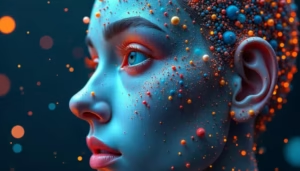
AI-generated art is revolutionizing the creative landscape, enabling artists and enthusiasts to explore new realms of expression through innovative techniques. By leveraging machine learning and algorithms, AI is not merely a tool but rather a collaborative partner in the artistic process. The dialogue between human creators and AI leads to the emergence of unique pieces of art that could not have been envisioned without the assistance of these advanced technologies. This integration of AI and creativity challenges traditional perspectives on what it means to create art.
Central to the concept of AI-generated art is the process known as generative design. This technique allows artists to input parameters and specifications, letting the AI generate variations that fulfill those criteria. As a result, the final output can range from breathtaking images to compelling visual narratives. This process not only enhances the creative capabilities of artists but also paves the way for new aesthetics and styles that reflect the intricacies of algorithms melding with human intention.
| AI Art Tool | Description | Features |
|---|---|---|
| DALL-E 2 | Generates images from textual descriptions. | High-quality visuals, customizable features, rapid generation. |
| DeepArt | Transform photos into artworks in various styles. | Multiple style options, easy-to-use interface. |
| Artbreeder | Merges images using AI, allowing for collaborative creativity. | Interactive mixing, community-driven features. |
As artists and technologists continue to push boundaries, understanding the intricate methods behind art generation becomes essential. One critical aspect to look into is the role of data sets in AI art creation. The inputs that feed into AI systems significantly influence the type of art produced. Therefore, an artist’s choice of data not only shapes the final creation but also represents a fusion of their vision and the AI’s capability to interpret and render that vision into reality.
Steps To Create AI-Generated Art
- Define your artistic vision and concepts.
- Select an appropriate AI tool or platform.
- Gather or create the data sets that align with your vision.
- Input the parameters into the AI system.
- Analyze the generated outputs and select your favorites.
- Refine and edit the chosen artworks if necessary.
- Share and showcase your final creations.
Understanding Generative Design
Generative design exemplifies a core principle of AI and creativity, facilitating creation through collaboration with algorithms. It enables the exploration of countless variations, allowing artists to filter and refine as they see fit. This method is especially advantageous in fields such as architecture, product design, and fine arts, where traditional methods can be time-consuming and restrictive. By harnessing the power of AI in generative design, creators can unlock possibilities that redefine their artistic journeys.
Top AI Art Tools
Several standout AI art tools have emerged, each offering unique functionalities that cater to various artistic needs. Understanding these tools can significantly enhance the creative process, providing artists with not just new methods but fresh inspirations. Some of the top tools, like DALL-E 2 and DeepArt, exemplify the diverse applications of AI in expanding the horizons of creativity, demonstrating how technology and imagination can intertwine.
The Role Of Music Composition AI In Modern Creativity
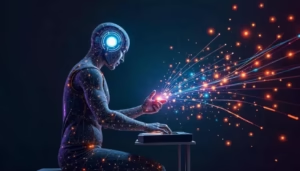
As we delve into the realm of AI and creativity, music composition AI stands out as a transformative force. By utilizing creative algorithms, these technologies not only enhance the production of music but also democratize the accessibility of musical creation. This innovative approach allows both seasoned musicians and novices to experiment with styles and sounds that they might not have explored otherwise. The collaboration between human artistry and AI tools is reshaping how we think about music and composition.
Benefits Of Music Composition AI
- Facilitates experimentation with diverse musical styles
- Accelerates the composition process, saving time for artists
- Offers personalized recommendations based on user preferences
- Promotes creativity through unexpected musical suggestions
- Enhances collaboration among musicians with differing skill levels
- Provides a platform for education in music theory and composition
With various options available, understanding the significance of music composition AI becomes crucial for artists. By employing these technologies, musicians can nurture their creativity and push the boundaries of their work. Each tool, equipped with unique features, allows for an engaging musical experience, highlighting the synergy between human creativity and machine intelligence.
Comparing Popular Music Composition Tools
Music composition AI tools come in various forms, each offering distinct advantages. Some focus on generating melodies based on user input, while others provide comprehensive compositions that can be tailored to fit specific projects. By examining and comparing these tools, musicians can identify the right fit for their creative process. This evaluation not only enhances productivity but also fosters a more innovative approach to music creation.
Ultimately, leveraging AI in music empowers artists to explore uncharted territories in their musical journey.
Embracing AI In Your Creative Processes

In the evolving landscape of AI and creativity, it’s crucial to understand how to effectively incorporate these advanced tools into your artistic workflow. Many creators are beginning to explore the potential of AI-generated art, writing, and even music composition AI. By leveraging these technologies, you can enhance your creative output while also pushing the boundaries of traditional artistic practices.
Tips For Integrating AI Tools
- Familiarize yourself with different AI tools available for your creative niche.
- Experiment with AI applications to understand their capabilities.
- Set clear objectives for what you want to achieve with AI in your work.
- Combine AI-generated content with your own creative inputs.
- Stay updated on advancements in AI technologies to leverage new opportunities.
- Join communities or forums to share experiences and learn from others.
- Reflect on the impact of AI on your creative process and adapt accordingly.
By embracing AI technologies, you can not only streamline your creative processes but also discover new dimensions in your art. As you explore the role of music composition AI and other innovative tools, consider how they can complement your unique artistic voice. The integration of AI and creativity has the potential to redefine what it means to be a creator, blurring the lines between human and machine-generated works.
Briefing: AI and Creativity
This briefing summarizes the key themes and important facts from the provided source, “AI and Creativity: Can Machines Write, Paint, and Compose? – The Future of Artificial Intelligence,” focusing on how artificial intelligence is transforming artistic expression.
Main Themes:
The overarching theme is that the relationship between AI and creativity is “continuously evolving, challenging traditional boundaries of artistic expression.” The source emphasizes that AI is not merely a tool but a “collaborative partner” that can “enhance artistic outcomes” and “redefine what it means to be a creator.”
Key ideas explored include:
- AI as a transformative force in various artistic mediums: The document details AI’s impact on art, music, and general creative processes.
- The changing definition of creativity and originality: The rise of AI-generated content raises “intriguing questions about the essence of creativity itself and whether machines can produce art that resonates with human emotions on a profound level.”
- The synergy between human and machine intelligence: The source consistently highlights the benefits of “collaboration between human artistry and AI tools.”
- Encouraging adoption and integration of AI in creative workflows: The document explicitly advises readers to “embrace AI in their creative endeavors.”
Most Important Ideas/Facts:
- AI’s Diverse Creative Capabilities: AI has moved beyond simple automation to autonomous content generation across various artistic domains.
- Autonomous Creation: “Machines that generate content independently.”
- Collaborative Tools: “AI-enhanced software that assists human artists.”
- Multi-Modal Artistry: “AI that integrates text, images, and sound seamlessly.”
- AI-Generated Art and Generative Design: This is a core concept where AI acts as a partner, allowing artists to explore numerous variations.
- “Central to the concept of AI-generated art is the process known as generative design. This technique allows artists to input parameters and specifications, letting the AI generate variations that fulfill those criteria.”
- The importance of data sets is highlighted: “The inputs that feed into AI systems significantly influence the type of art produced.”
- Specific AI Art Tools and Their Features: The source provides concrete examples of widely used AI art platforms.
- DALL-E 2: “Generates images from textual descriptions. High-quality visuals, customizable features, rapid generation.”
- DeepArt: “Transform photos into artworks in various styles. Multiple style options, easy-to-use interface.”
- Artbreeder: “Merges images using AI, allowing for collaborative creativity. Interactive mixing, community-driven features.”
- The Impact of Music Composition AI: AI is democratizing and accelerating music creation.
- “By utilizing creative algorithms, these technologies not only enhance the production of music but also democratize the accessibility of musical creation.”
- Benefits include: “Facilitates experimentation with diverse musical styles,” “Accelerates the composition process, saving time for artists,” and “Promotes creativity through unexpected musical suggestions.”
- Practical Integration of AI into Creative Processes: The document offers actionable advice for creators.
- “It’s crucial to understand how to effectively incorporate these advanced tools into your artistic workflow.”
- Key tips include: “Familiarize yourself with different AI tools,” “Experiment with AI applications,” “Combine AI-generated content with your own creative inputs,” and “Stay updated on advancements in AI technologies.”
In conclusion, the source strongly advocates for the integration of AI into creative practices, viewing it as a powerful enabler for new artistic expressions and a redefinition of the creative process itself, driven by the collaboration between human vision and machine capabilities.
Artificial intelligence /humanaifuture.com
🎧 Listen to the Podcast
Want to explore this topic in more depth? Listen to the full podcast for more insights and expert commentary.
▶️ Play on Google DriveNo sign-up needed — just click and listen.
What are the core aspects that define the relationship between AI and creativity?
The relationship between AI and creativity is defined by several core aspects:
- Autonomous Creation: AI systems generating content independently.
- Collaborative Tools: AI-enhanced software assisting human artists.
- Style Transfer: Algorithms applying artistic styles to new works.
- Data-Driven Insights: AI analyzing trends and preferences to guide creative processes.
- Adaptive Learning: Systems improving their creative output based on feedback and interaction.
- Multi-Modal Artistry: AI seamlessly integrating text, images, and sound. These aspects highlight how AI delves deeper into understanding the creative process, influencing perceptions of ownership and originality.
How does AI-generated art revolutionize the creative landscape?
AI-generated art revolutionizes the creative landscape by enabling artists and enthusiasts to explore new realms of expression through innovative techniques like "generative design." AI acts as a collaborative partner, allowing artists to input parameters and specifications for the AI to generate diverse variations. This integration leads to unique pieces of art that blend human intention with algorithmic intricacies, challenging traditional perspectives on art creation and paving the way for new aesthetics and styles. Tools like DALL-E 2, DeepArt, and Artbreeder exemplify these advancements.
What is "generative design" in the context of AI and creativity?
Generative design is a core principle of AI and creativity that facilitates creation through collaboration with algorithms. Artists input parameters, and the AI generates numerous variations that fulfill those criteria. This method allows for the exploration of countless possibilities, enabling artists to filter and refine outputs as needed. It's particularly advantageous in fields like architecture, product design, and fine arts, where it unlocks creative possibilities that would be time-consuming or restrictive with traditional methods.
How is music composition AI impacting modern creativity?
Music composition AI is a transformative force in modern creativity. By utilizing creative algorithms, it not only enhances music production but also democratizes access to musical creation for both seasoned musicians and novices. It facilitates experimentation with diverse styles, accelerates the composition process, offers personalized recommendations, promotes creativity through unexpected suggestions, and enhances collaboration among musicians. Ultimately, it reshapes how we think about music and composition by empowering artists to explore uncharted territories in their musical journeys.
What are the key benefits of using Music Composition AI?
The key benefits of using Music Composition AI include:
- Facilitating experimentation with diverse musical styles.
- Accelerating the composition process, saving time for artists.
- Offering personalized recommendations based on user preferences.
- Promoting creativity through unexpected musical suggestions.
- Enhancing collaboration among musicians with differing skill levels.
- Providing a platform for education in music theory and composition.
What steps are involved in creating AI-generated art?
The steps involved in creating AI-generated art are:
- Define your artistic vision and concepts.
- Select an appropriate AI tool or platform.
- Gather or create the data sets that align with your vision.
- Input the parameters into the AI system.
- Analyze the generated outputs and select your favorites.
- Refine and edit the chosen artworks if necessary.
- Share and showcase your final creations.
How can creators effectively integrate AI into their artistic workflows?
Creators can effectively integrate AI into their artistic workflows by:
- Familiarizing themselves with available AI tools for their niche.
- Experimenting with AI applications to understand their capabilities.
- Setting clear objectives for what they want to achieve with AI.
- Combining AI-generated content with their own creative inputs.
- Staying updated on advancements in AI technologies.
- Joining communities or forums to share experiences and learn from others.
- Reflecting on AI's impact on their creative process and adapting accordingly. Embracing AI technologies can streamline processes, discover new artistic dimensions, and redefine what it means to be a creator, blurring lines between human and machine-generated works.


